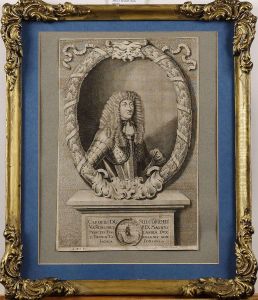Johan Willem Franck Paintings
Johan Willem Franck, also known as Johann Wilhelm Francken or Francke, was a notable figure in the realm of Baroque art, born in 1607 and passing away in 1661. Though not as universally recognized as some of his contemporaries, Franck made significant contributions to the art world during the 17th century, a period known for its dramatic use of color, light, and shadow, as well as its intricate detailing and emotional depth.
Originating from Antwerp, a city within the Spanish Netherlands that is now part of Belgium, Franck was born into an era when Antwerp was a vibrant center for trade and art. This environment was rich with artistic fervor, thanks to the presence of the Antwerp school, which played a pivotal role in the development of Flemish Baroque painting. The city's thriving artistic community provided a fertile ground for Franck's development as an artist.
Franck's work is characterized by its dynamic compositions and vibrant use of color, typical of the Baroque style. He was adept at both religious and mythological subjects, infusing them with a sense of drama and emotional intensity that was sought after in his time. Like many artists of the Baroque period, Franck exhibited a keen interest in depicting movement and contrast, utilizing light and shadow to achieve a sense of depth and realism in his paintings.
Despite his talents and contributions, Franck's legacy is somewhat overshadowed by the more famous names of his era, such as Peter Paul Rubens and Anthony van Dyck. However, his work continues to be studied and appreciated for its artistic value and its role in the broader tapestry of 17th-century European art. Johan Willem Franck's paintings remain a testament to the rich artistic traditions of the Baroque period, and his life reflects the vibrant cultural milieu of Antwerp during a time of significant historical and artistic development.
